Although I wrote the Ford Explorer first drive review, I’ve never actually tested one at home and therefore done a luggage test. That changes today with this Ford Explorer Timberline. With all due respect to the ST, this would be the coolest Explorer available for no other reason that it looks (and is) capable of actual exploration. I would’ve preferred the Forged Green Metallic that John Snyder’s Timberline was painted, but I’ll settle for this outdoorsy trim level’s standard Deep Cypress (green) pleather mixed with gray heather fabric. It’s fantastic.
As it turns out, so is the Timberline’s cargo functionality courtesy the standard Cargo Area Management System package that’s an option on all other Explorers except for the fleet-darling Base. I’ll talk plenty about that package eventually, but for now, let’s talk about the main parameters of this test: how much luggage fits behind the third row?
On paper, that’s answered by “18.2 cubic-feet.” Ford does not indicate whether that’s measured with or without the significant underfloor storage area included, but judging by my eventual result as well as others in the segment, I’m leaning toward it including that underfloor storage area. Ultimately, though, this is literally why I do this test: to go beyond the numbers and compare using the same selection of bags.
Here is the space with the floor in place. This is one reason why that 18.6 number includes the underfloor area: It looks smaller back here with the floor in place than rival SUVs with less on-paper cargo volume.
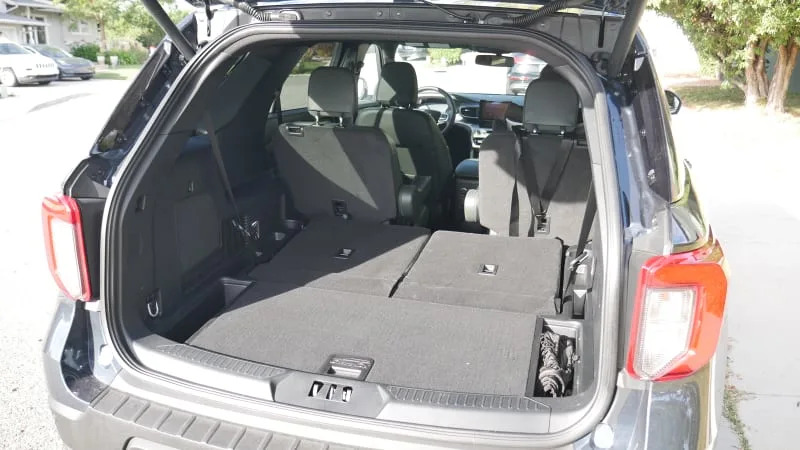
Frankly, though, that doesn’t really matter, because the only reason you’re using the taller height is to create a fully flat cargo floor when the third row is lowered. Like this!
As such …
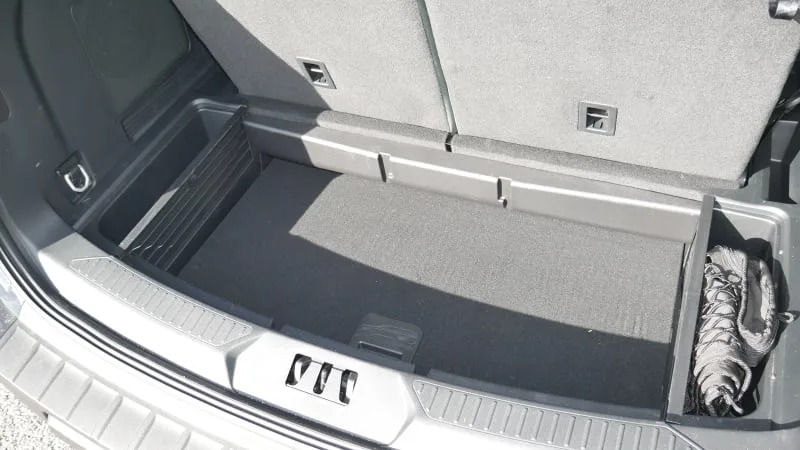
Boom, it really looks like this.
Better still, the floor piece is stored inside the Explorer, sitting atop the floor below. There’s no need to store it elsewhere, nor is it a hinged panel that robs you of room.
Now, in retrospect, I could’ve tested with and without the panel down there, but given the result, I seriously doubt the added inch-ish would’ve been a game-changer for this test.
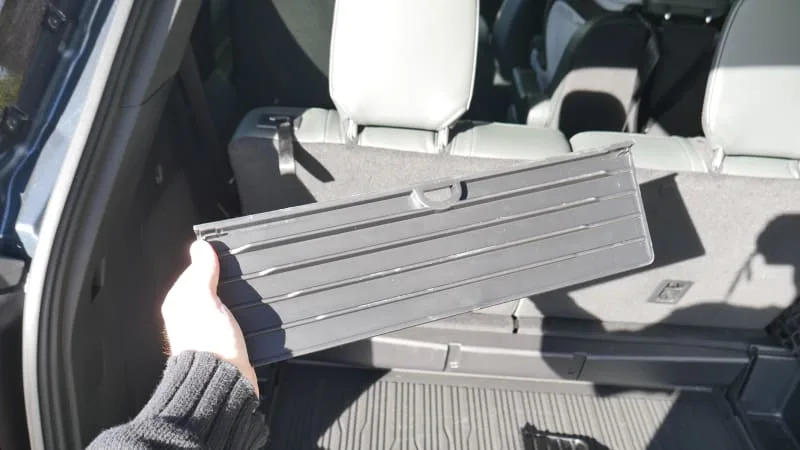
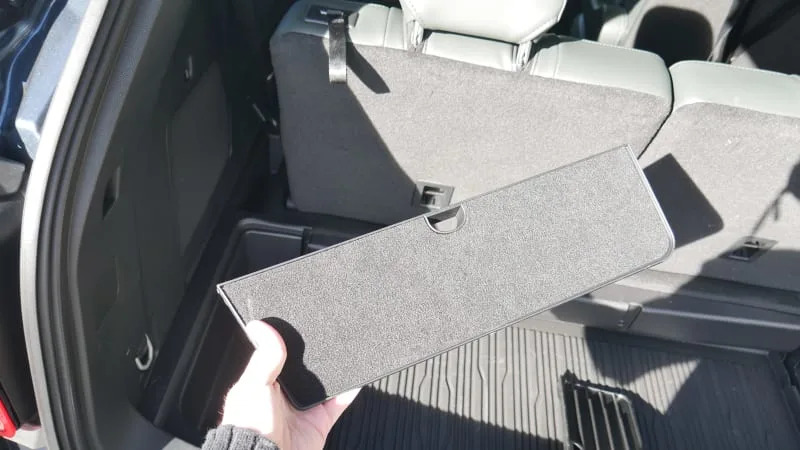
These pieces are the little walls on the outboard portions of the underfloor area. To maximize space, you need to pop them out and store them wherever inside the car. No biggy. They’ll come into play later, BTW.
OK, now with everything in place and/or removed, let’s get to the bags. As with every Luggage Test, I use two midsize roller suitcases that would need to be checked in at the airport (26 inches long, 16 wide, 11 deep), two roll-aboard suitcases that just barely fit in the overhead (24L x 15W x 10D), and one smaller roll-aboard that fits easily (23L x 15W x 10D). I also include my wife’s fancy overnight bag just to spruce things up a bit (21L x 12W x 12D).
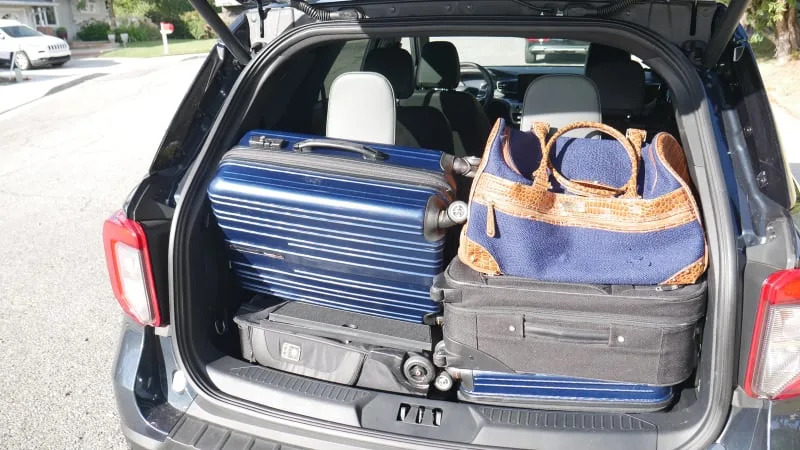
This is every bag but one of the two biggest bags. This puts the Explorer in fourth place on the current Luggage Test three-row crossover leader board behind the Toyota Grand Highlander, Kia Telluride and Honda Pilot (with the VW Atlas likely in that group, but that was a previous rendition of the luggage test).
Here’s the difference.
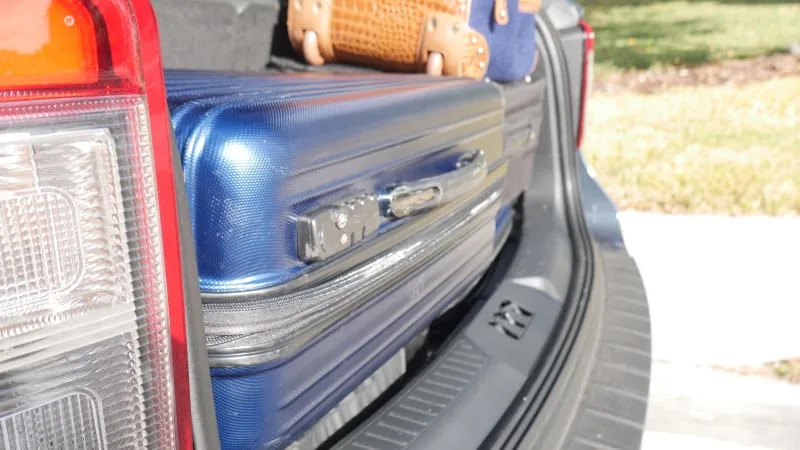
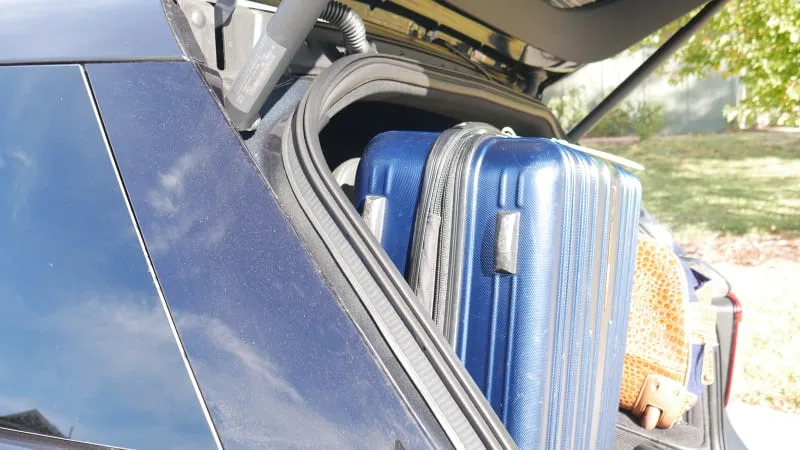
The Explorer doesn’t have as much length behind its third row as those others. That means I couldn’t fit my biggest bags on their bellies, while also hampering standing them up and staying clear of the liftgate closing. Width is similar to the Honda Pilot, though.
Being slightly smaller also results in a more creative Tetris formation.
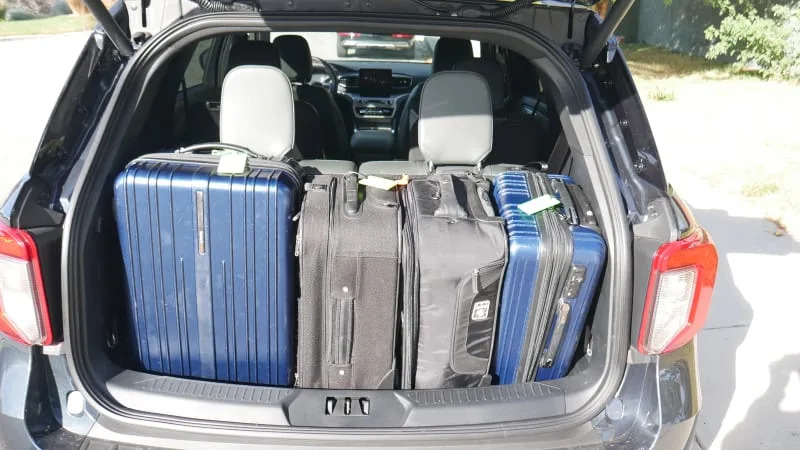
If I decided to leave the fancy bag at home or stuff it someplace in the cabin, I’d get this much cleaner formation. This is all that the Subaru Ascent could manage, by the way.
OK, now let’s turn to the Cargo Area Management system.
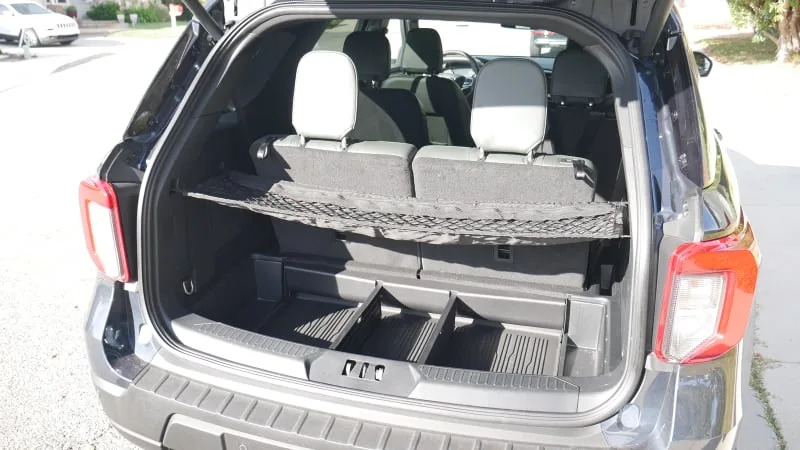
This is what the cargo area looks like with the Cargo Area Management System that, again, is included in the Timberline and available on all trim levels above the base. You should definitely opt for it.
For $165, you get the following.
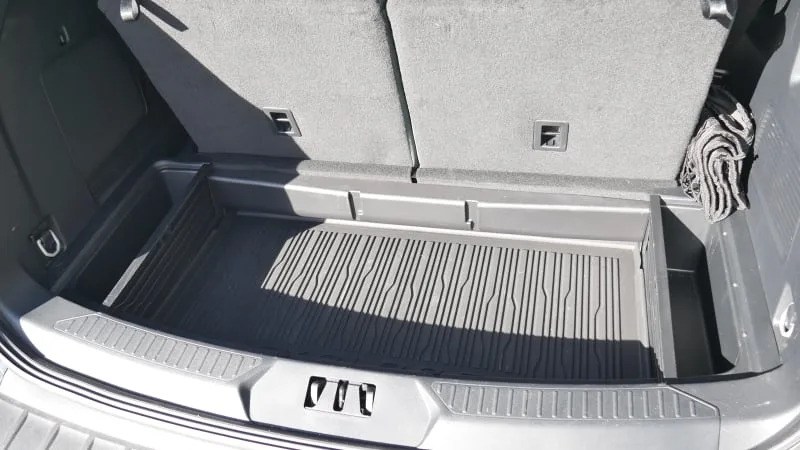
Rubber cargo floor mat.
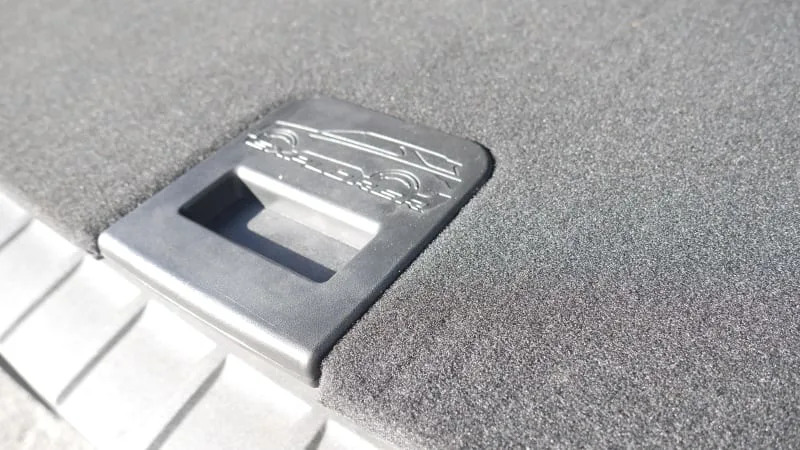
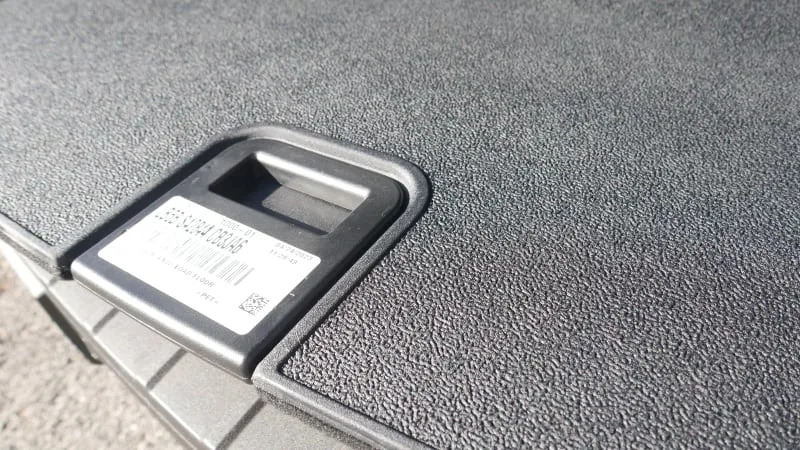
Double-sided cargo floor piece, with one side carpet and the other grippy rubber.
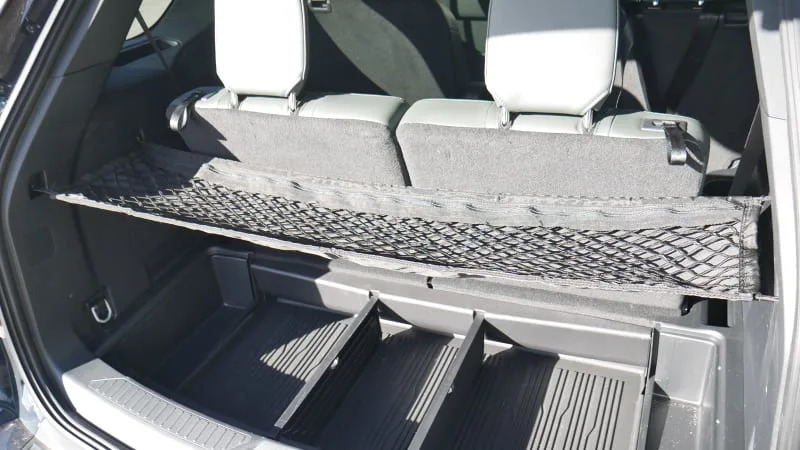
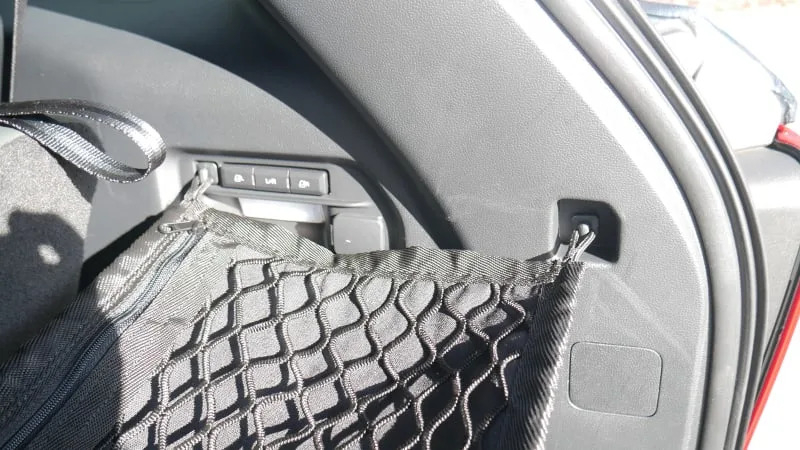
This hammock-like cargo net doubles as a cargo cover. It’s zippered with an expandable elastic top. I’ve never seen anything like this before; it seems like a tremendous useful feature. It can be easily stashed away wherever, too.
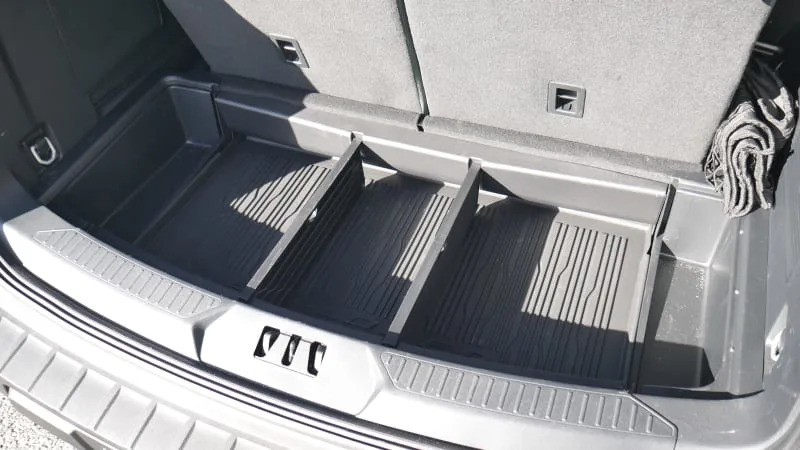
Now, back to those removable walls. These are in every Explorer, it seems, and can be moved between inboard and outboard positions. If this was a Grocery Test, I’m saying right now that the Explorer would be right at the top of the three-row pack. The compartmentalized nature of this setup makes is easy to stow grocery bags without them moving around and emptying their contents throughout your cargo area.
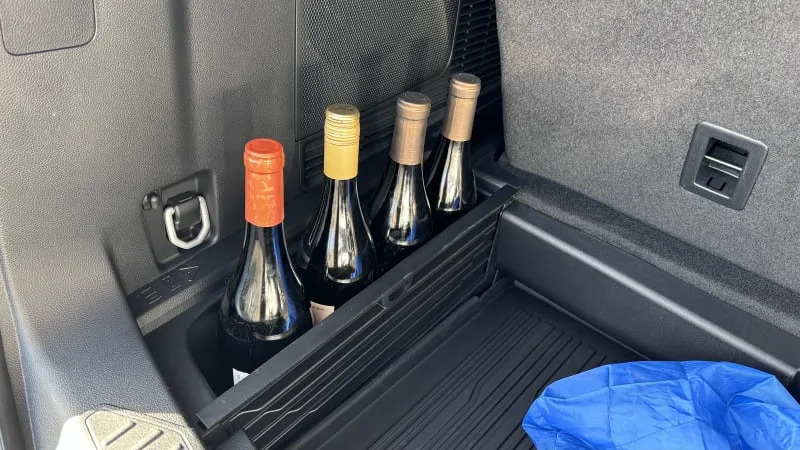
They also let you do this. The resulting area, on both sides, is enough to hold four bottles of wine each. I flipped the walls so the carpeted side faced the bottles, and while I wouldn’t exactly attempt a rutted dirt road while so-loaded, the Explorer still makes for a mighty-fine booze runner. Put that on a billboard, Ford.
